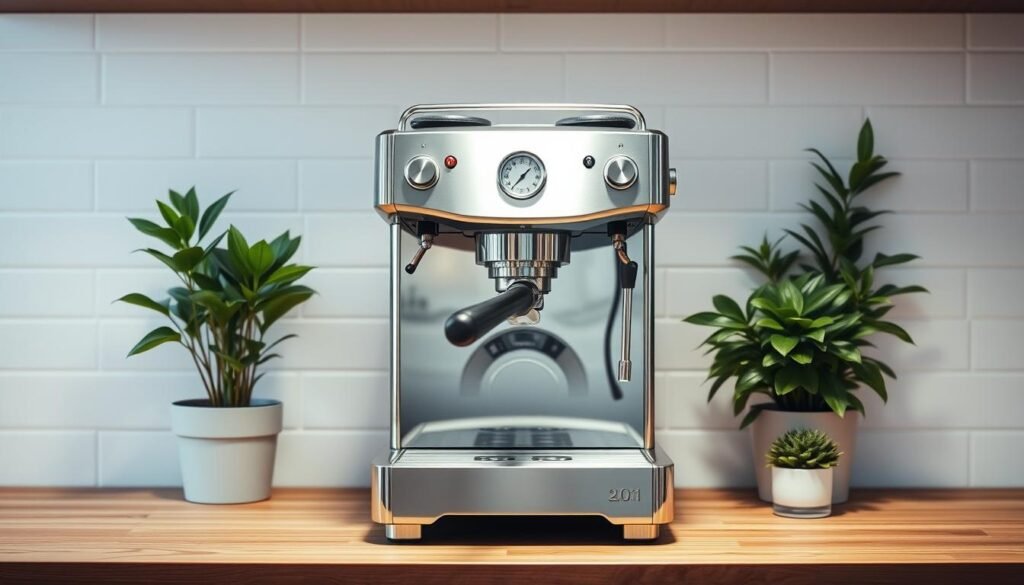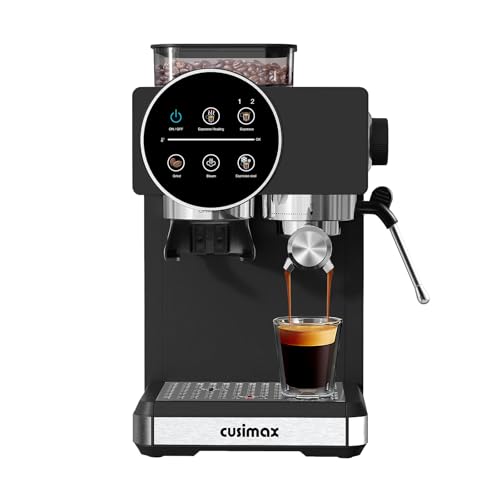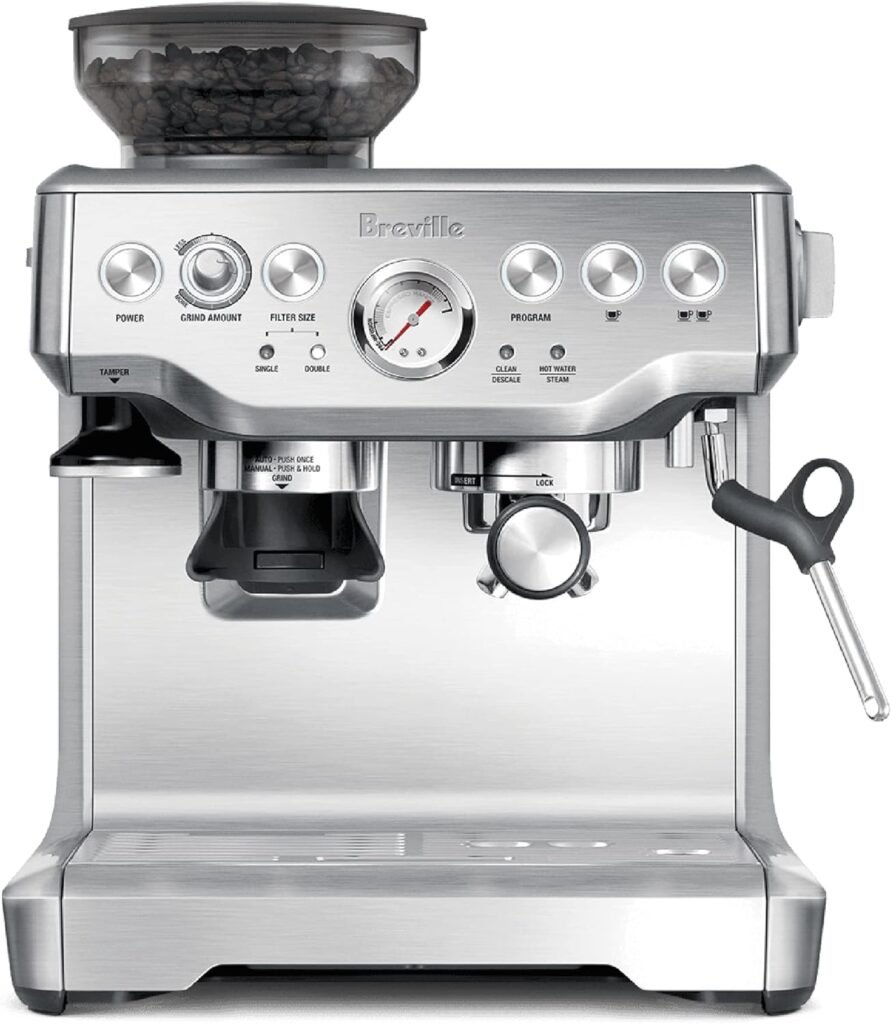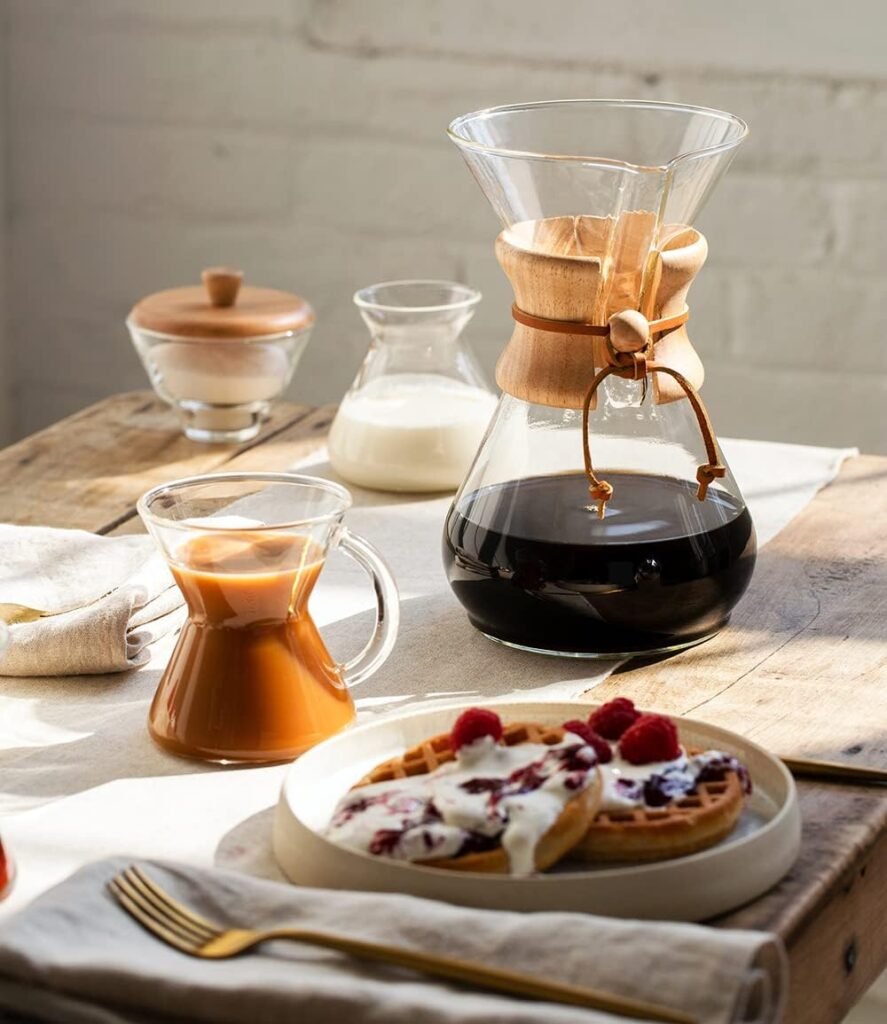Did you know that the average coffee lover spends over $100 on their home espresso machine, yet still can’t replicate the café-quality coffee they crave? The issue often lies not with the equipment, but with the common errors people make when using it.
I have identified seven critical mistakes that can turn your home-brewed espresso into a subpar experience. From improper maintenance to incorrect usage, these pitfalls can significantly impact the flavor and aroma of your coffee.
By understanding and avoiding these mistakes, you can transform your daily cup and extend the life of your machine. Whether you’re a seasoned home barista or just starting out, recognizing these common errors is the first step towards achieving café-quality coffee at home.
The Foundation of Great Espresso: Coffee Bean Mistakes
The secret to a perfect shot of espresso lies in the quality and freshness of your coffee beans. Fresh, high-quality beans are essential for a great espresso, as they directly impact the taste, aroma, and overall experience.
Using Stale or Poor Quality Beans
Using old or poor-quality coffee beans can ruin your espresso. Fresh beans make your coffee taste better, smell nicer, and look more appealing with a golden foam on top, known as crema. When you use old beans, your espresso often tastes flat or bitter. To keep your beans fresh, check the roast date when you buy them. Look for beans roasted within the last two weeks. It’s also crucial to buy whole beans and grind them just before making coffee.
Improper Bean Storage
Proper storage is vital to maintaining the freshness of your coffee beans. Store them in an airtight container in a cool, dark place, but avoid storing them in the fridge or freezer. Buying smaller quantities of freshly roasted beans more frequently is preferable to purchasing in bulk. This ensures that you’re always using beans within the optimal 2-4 weeks after roasting for the best flavor.

- Checking the roast date to ensure beans are used within 2-4 weeks for optimal flavor
- Storing beans in airtight containers in cool, dark places
- Avoiding refrigerators and freezers for bean storage
- Buying smaller quantities of freshly roasted beans
Grinding Errors That Ruin Your Shot
To make great espresso, it’s essential to get the grinding right. The grind size and consistency of your coffee beans play a crucial role in determining the quality of your shot.
Incorrect Grind Size
The size of your coffee grounds significantly affects the taste of your espresso. If the grind is too coarse, water passes through too quickly, resulting in a weak and sour taste. Conversely, if it’s too fine, water struggles to pass through, leading to a bitter taste. A good starting point is to grind your coffee to the size of table salt and adjust based on the taste. For a perfect shot, the grind size may need to be adjusted for different machines and coffee types.
Inconsistent Grinding Techniques
Using a grinder that produces inconsistent particle sizes can lead to uneven extraction and a poor-tasting shot. Investing in a quality burr grinder can make a significant difference. It ensures that your coffee grounds are consistent, which is crucial for achieving the perfect espresso taste. The right grinder helps in making espresso that is rich and full of flavor.
| Grind Size | Effect on Espresso | Adjustment |
|---|---|---|
| Too Coarse | Weak and Sour | Make grind finer |
| Too Fine | Bitter | Make grind coarser |
| Just Right | Balanced Flavor | Maintain current grind size |
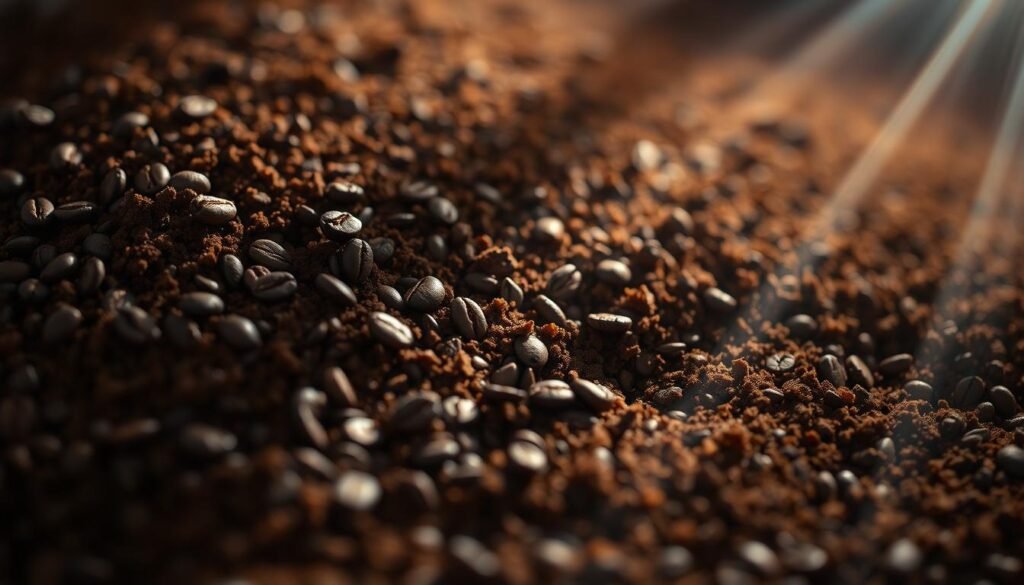
Common Espresso Machine Mistakes to Avoid
Making great espresso requires more than just a good machine; it also involves avoiding common pitfalls in machine maintenance. Proper care and maintenance of your espresso machine are crucial for producing high-quality espresso.
Neglecting Regular Cleaning
Neglecting regular cleaning of your espresso machine can significantly impact the taste of your coffee and the lifespan of your machine. Coffee oils and mineral deposits from water can build up in various parts of the machine, creating an environment conducive to bacteria growth and causing components to work inefficiently.
To maintain your machine, I recommend a daily, weekly, and monthly cleaning schedule. Daily maintenance involves wiping down the group head and purging the steam wand. Weekly cleaning includes backflushing with water and cleaning the drip tray. Monthly deep cleaning involves descaling the machine and disassembling and cleaning removable parts.
Skipping Machine Warm-up
Allowing your machine to properly warm up before brewing is essential for achieving the perfect shot. Temperature stability is crucial for proper extraction, and a cold machine can lead to under-extracted, sour espresso. Preheating your cups and portafilters is also vital for maintaining the overall temperature management system.
For most home espresso machines, a warm-up time of 15-30 minutes is recommended. While it may be tempting to rush this step, doing so can compromise the quality of your espresso. Even when you’re in a hurry, taking the time to properly warm up your machine will result in a better-tasting shot.
Preparation Technique Failures
The art of making great espresso lies in the details of preparation, including tamping, dosing, and brewing ratios. Even small variations in these techniques can significantly impact the flavor and quality of your coffee. In this section, we’ll explore common preparation technique failures that can ruin your espresso shot.
Inconsistent Tamping Pressure
Tamping is a critical step in preparing espresso. It involves compressing the coffee grounds in the portafilter to ensure even extraction. Inconsistent tamping pressure can lead to channeling, where water flows unevenly through the coffee, resulting in an unbalanced shot. To tamp correctly, apply about 30 pounds of pressure evenly, making sure the tamper is level and the surface is smooth.
Not Using a Scale for Precision
Using a scale is crucial for precise dosing and yield measurement. Even small variations in coffee quantity can significantly impact the flavor balance and consistency of your espresso shot. By measuring your coffee and espresso output accurately, you can refine your brewing technique and achieve a more consistent result.
Incorrect Brewing Ratios
The brewing ratio, or the relationship between coffee input and espresso output, is essential for balanced espresso. Finding the right ratio depends on your beans, roast level, and personal preference. A common mistake is using too much coffee, resulting in under-extraction, or extracting too much liquid, causing over-extraction and bitterness.
| Brewing Ratio | Effect on Espresso | Flavor Profile |
|---|---|---|
| 1:2 (under-extraction) | Sour, weak flavor | Unbalanced, lacking depth |
| 1:3 (optimal ratio) | Balanced extraction | Rich, nuanced flavor |
| 1:4 (over-extraction) | Bitter, harsh flavor | Unbalanced, unpleasant |
By adjusting your brewing ratio and paying attention to tamping and dosing, you can significantly improve the quality of your espresso shots. Experimenting with different ratios and techniques will help you find the perfect balance for your taste preferences.
Water and Milk Considerations
To create exceptional espresso-based drinks, you need to consider the often-overlooked factors of water and milk. While many focus on the espresso machine and coffee beans, the quality of your water and the technique used for frothing milk can make or break your coffee.
Using Improper Water Quality
The type of water you use in your espresso machine significantly affects both the taste of your coffee and the longevity of your machine. Using tap water can be a big mistake if it’s too hard or too soft. Hard water can cause mineral buildup, damaging your machine over time, while soft water can result in flat or sour-tasting coffee.
To avoid these issues, consider using filtered water. A simple carbon filter can remove bad tastes and harmful chemicals. You can also use specialty water made for coffee, which has the right balance of minerals. Avoid using distilled or softened water, as they lack the necessary minerals for good coffee flavor.
Milk Frothing Mistakes
Frothing milk is an art that requires practice. Common mistakes can ruin even perfectly extracted espresso when making milk-based drinks. Issues like big bubbles, overheated milk, or improper foam texture can be avoided with the right technique.
To froth milk correctly, you need to control the temperature and texture. Use the steam wand to create microfoam, and adjust your technique based on the type of milk you’re using. Whether it’s whole, skim, or alternative milk, different milks require different frothing techniques to achieve the perfect consistency and flavor.
Conclusion: Perfecting Your Espresso Game
By recognizing and rectifying seven key mistakes, you can unlock the full potential of your espresso machine and enjoy a better coffee experience at home.
Avoiding these common errors can transform your daily coffee routine, allowing you to pull shot after shot of high-quality espresso. With practice and patience, you’ll refine your technique and develop a deeper appreciation for the craft.
As you continue to hone your skills, remember that even professional baristas continually refine their techniques. By focusing on one aspect at a time and experimenting with different approaches, you’ll be well on your way to creating exceptional coffee at home, one cup at a time.
Need Espresso Machine for your home! your in the right place, check price on Amazon below.
